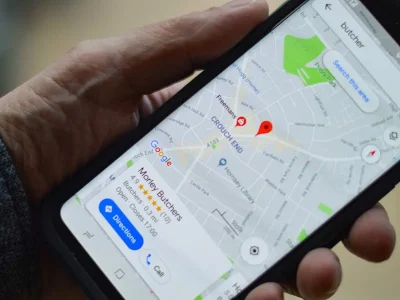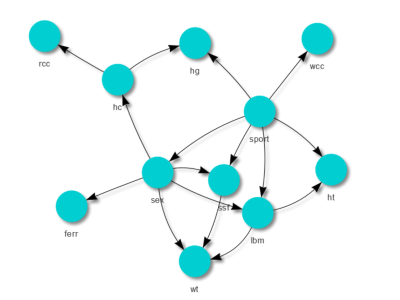If you’ve watched any sharp ecommerce brand closely, you’ll notice they treat their Instagram page like a storefront window that changes depending on what they’re about to release. Product drops create a burst of attention, and smart brands prepare for that spike long before they publish the first teaser. One of the most overlooked parts of that prep work is timing follower orders so the profile looks active, steady, and trustworthy exactly when shoppers start snooping around.
I’m saying this as someone who manages several ecommerce sites and audits many more. Across niches—beauty, clothing, gadgets, home accessories—the brands that manage product drops well rarely rely on last-minute pushes. They build momentum in layers. And follower timing plays a bigger role in conversions than most people admit publicly.
Why ecommerce brands even bother with timing
Every product drop has three windows. The pre-heat, the launch day, and the settling period. Each one attracts a different kind of viewer. Teasers attract curious scrollers. Launch day attracts shoppers who are deciding quickly. After that, you get a wave of people checking whether the drop was real and whether early buyers were happy.
Across all three, profile checks spike. People open your page and run their silent checklist: “Do these posts look real Can I trust the product Is this brand still active Does this feed feel alive” Follower count plays directly into that snap judgment. You don’t need huge numbers; you need believable ones that suit your category and posting rhythm.
That’s why timing matters. You don’t want a surge that hits after the drop, when visitors have already made up their mind. You want numbers that settle in before the reveal, so visitors feel like they’re walking into a store that already has a line forming. Humans love social cues. A steady follower base removes friction without you having to say a word.
How the pre-heat phase works
The pre-heat starts seven to twenty days before the drop, depending on how dramatic your drop is. If you sell small accessories, your warmup can be quick. If you sell something premium or seasonal, your warmup needs to be longer. During this period, brands seed hints—silhouettes, textures, close-ups, packaging. These posts don’t need huge engagement, but they do need clean reach and clean profile impressions.
Follower orders fit into this phase best when they’re delivered slowly and steadily. A drip approach keeps numbers rising without sudden spikes. Those spikes make things look odd, especially if they happen on a night when you’re not posting. A slow rise looks like organic curiosity. And because Instagram’s own systems monitor behavior patterns, soft pacing tends to keep your reach stable while you prep for launch.
The bigger benefit shows up in profile view behavior. Visitors arriving from teaser posts see a follower count that signals, “other people are waiting too.” That tiny psychological nudge makes them more willing to save the post, follow for updates, or check your highlights to see if you’ve dropped hints elsewhere.
If you don’t know where to source follower delivery that doesn’t blow up your credibility, there are pages like this Instagram growth service listing that show options with clear pacing controls and drop protection. What matters isn’t the service—it’s the control you have over how the numbers enter your profile. Too fast feels suspicious. Slow feels real.
Launch week: the tight window where ratios matter most
Launch week is a storm—traffic spikes, reels pick up more shares, and DMs flood in with questions you answered six times already. In that chaos, your profile needs to be ready for two specific checks: engagement ratio and posting rhythm.
If your follower count is stable but your likes trail behind, visitors assume the page is dull. If your likes are strong but the follower count looks low for your niche, visitors assume you’re small or untested. Neither is ideal when you’re trying to convert product curiosity into actual sales. That’s why many ecommerce teams calibrate their follower count about three to five days before the drop, not the night before.
In that window you’re posting teasers, product hints, countdown stories, and closer looks. These posts do heavy lifting. Visitors who find those posts and open your profile should see ratios that feel natural—strong enough to show activity, calm enough to feel believable. This is also when pinned posts work hardest. One pin introduces the product, another shows proof that past drops sold well, and a third gives an early look at what’s coming. Paired with clean follower timing, the whole profile feels intentional.
Another overlooked benefit: ads and influencer posts convert better if the page looks sharp. Creators will tag you. Ads will push new people. If those users check your profile and something feels weird—sudden follower jump, weak content, outdated highlights—they bounce. Brands that time their follower orders early in the week avoid that bounce. They start launch day with clean numbers and a profile that supports conversion rather than fighting it.
After the drop: managing the cool-down period
Once the product goes live, the initial rush ends faster than most teams expect. But the interest doesn’t. People come back to check availability, reviews, and color options. They look for restock hints. This late wave is quieter, but it’s filled with higher-intent viewers. They linger and check posts more carefully.
This is the time when follower inconsistency shows the most. If you timed everything before launch but ignore this phase, you end up with a profile that looks hot for one week and flat the next. That inconsistency doesn’t ruin trust, but it does signal that the drop excitement faded quickly. A steady drip of followers in this phase keeps your page looking active and alive while you post post-drop content—customer reactions, usage clips, tutorials, or comparison reels.
Some brands even treat this phase as a cleanup round. They archive early teasers, rotate pins to highlight restock info or add-on bundles, and publish UGC at a faster rate. Because follower numbers are stable, these changes feel natural. Visitors returning for updates don’t feel like the brand ghosted them. That feeling translates into more repeat traffic and, in many cases, more purchases once restocks go live.
This is also where many ecommerce pages run into trouble. They pull all their follower activity before launch and leave nothing for after. The result is a profile that looks lively one week and stale the next. A small, steady schedule during the cool-down solves that.
Why this timing matters more than people think
Ecommerce is impulsive by nature. People don’t need perfect trust—they need enough trust to hit “add to cart.” Most of that trust is built quietly. A follower count that matches your niche. Engagement that looks consistent. Posts that feel recent. Highlights that actually help. Pinned posts that communicate value in seconds.
Follower timing supports all of that. It shapes the invisible cues that tell a shopper, “this brand is alive and people care.” It’s not about bragging rights or vanity. It’s about reducing hesitation during the exact week you need confidence the most.
And because Instagram is still the window shopping platform of the internet, visitor behavior is predictable. First they open the reel. Then they tap your handle. Then they check the top row. A profile that looks stable and active wins that moment. A profile that looks choppy loses it.
That’s why ecommerce teams who already tune hooks, thumbnails, captions, and ad spend still use follower timing strategically. It’s not loud. It’s not braggy. It’s a backstage move that makes the front-stage look smoother.
Bringing it all together
If you run drops often, build a calendar. Warm up two weeks before. Stabilize ratios three to five days before the reveal. Support launch day with clean visuals and pinned posts. Use a slow, steady approach for a week after. Treat follower timing like wardrobe in a photoshoot—if it fits, everything else looks better.
And if you need structured follower delivery that doesn’t wreck your ratios, services with pacing control—like the ones you’d find on a good Instagram growth options page—are safer than random blasts. Use them as seasoning, not the meal. The real work is still your content, your product, and your ability to show why your drop matters.
Get that balance right and you’ll notice drops feel smoother, conversion doesn’t dip as much between phases, and your Instagram page stops looking like it goes through mood swings. Timing is the quiet edge. And ecommerce rewards people who understand quiet edges.







Comments